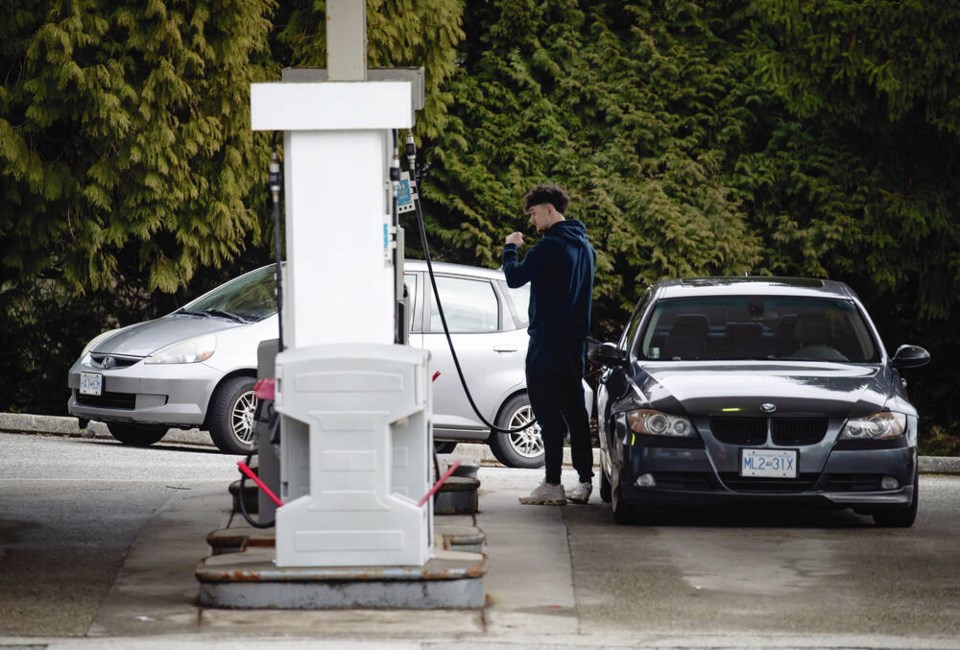I remember as if it was yesterday my first “metric” fill-up at the Gulf station at Hillside and Douglas in Victoria. It was April 1, 1975, and the irony wasn’t lost on me as I filled up my good old lime-green Datsun 510 for 20.9 cents a litre.
That means that over the past 47 years, the local price for gas has increased ten-fold. It’s hard to even think about. But it’s the 33% per cent wallop over the past three months — from around $1.50 per litre to the $2-plus level — that has really staggered Island drivers.
There’s always a host of factors — some more believable than others — as to why gas costs so much. Despite all the pronouncements, reducing demand is the only way I’ve ever seen to make big oil pay attention to pricing.
Fortunately, there is some relief to be found through safer driving that reduces your fuel consumption. There are no true miracles here, but at $2.16 a litre, every little bit helps.
The best way to get better mileage right now is to drive slower and more steadily. We’ve all seen those drivers who race to the next red light, then blast off to the next red light after that.
Aggressive stops and starts can lower gas mileage by 33% on a highway and 3-5% in town. Smooth, steady acceleration while keeping your distance and gliding to stops can lower the fuel bill substantially.
Simply keeping your vehicle tuned up and following the manufacturer’s maintenance schedule also helps reduce fuel consumption. If you’re driving an older vehicle and don’t have a manual, consult with a service professional. They’ve seen it all and can offer sound advice on how to keep things running smoothly. Sometimes a minor repair or adjustment can make a big difference.
Don’t put off mechanical repairs. An ignored “check engine” light can be costing you big time. The U.S. Environmental Protection Agency warns that fixing a faulty oxygen sensor can improve gas mileage by up to 40%. That’s massive in a $150 or $200 fill-up.
Even simple maintenance like ensuring you’re using the right grade of motor oil and the proper grade of gas can make small cost differences that add up over time. For older-model cars, a clean and regularly replaced air filter that allows the carburettor to breathe properly improves performance and gas mileage.
Ensuring that your tire pressure is kept at the right level can also help. Under-inflated tires can lower gas mileage by 0.3% for every one psi drop from the proper tire pressure. There’s a sticker on the inside of your driver’s door that tells you exactly what the pressures should be for front and rear tires.
Reducing your idling time also works. Some studies have shown that an idling car can cost you up to 3 cents a minute, so consider shutting it down at road-construction sites or while waiting at that favorite drive-through. Many current-model vehicles now have automatic engine-shut-off features to save both fuel costs and the environment, while most municipalities have enacted anti-idling bylaws.
Excess weight inside your car means the engine has to work harder to move you around. So perhaps it’s time to take the old fridge to the dump and get it out of the back of your pickup. Simply shedding 40 kilos can increase fuel efficiency by 1%. Smaller vehicles are also affected by excess weight more than larger ones.
There’s also a double whammy if you’re carrying that extra weight in a large, blunt rooftop cargo container. The lack of aerodynamic flow caused by that flat, square face can reduce fuel economy by up to 17% on a highway and up to 8% in town. Take it off the roof when you don’t need it. Consider a rear-mounted cargo box that only reduces fuel economy by one or two per cent.
We are still years away from truly practical, affordable electric or hydrogen-powered vehicles for the majority of drivers. Until then, slower, safer driving in a well-maintained vehicle is your best bet to save those hard-earned fuel dollars.
Glove Box: I had lots of follow-up from readers about the types of safety equipment we should be carrying in our cars. Several people wrote about the wonders of aerosol sealant for flat tires. That one didn’t even occur to me, nor did the most basic emergency accoutrement of them all and the thing I’ve actually used myself more than any other safety item — battery jumper cables.



